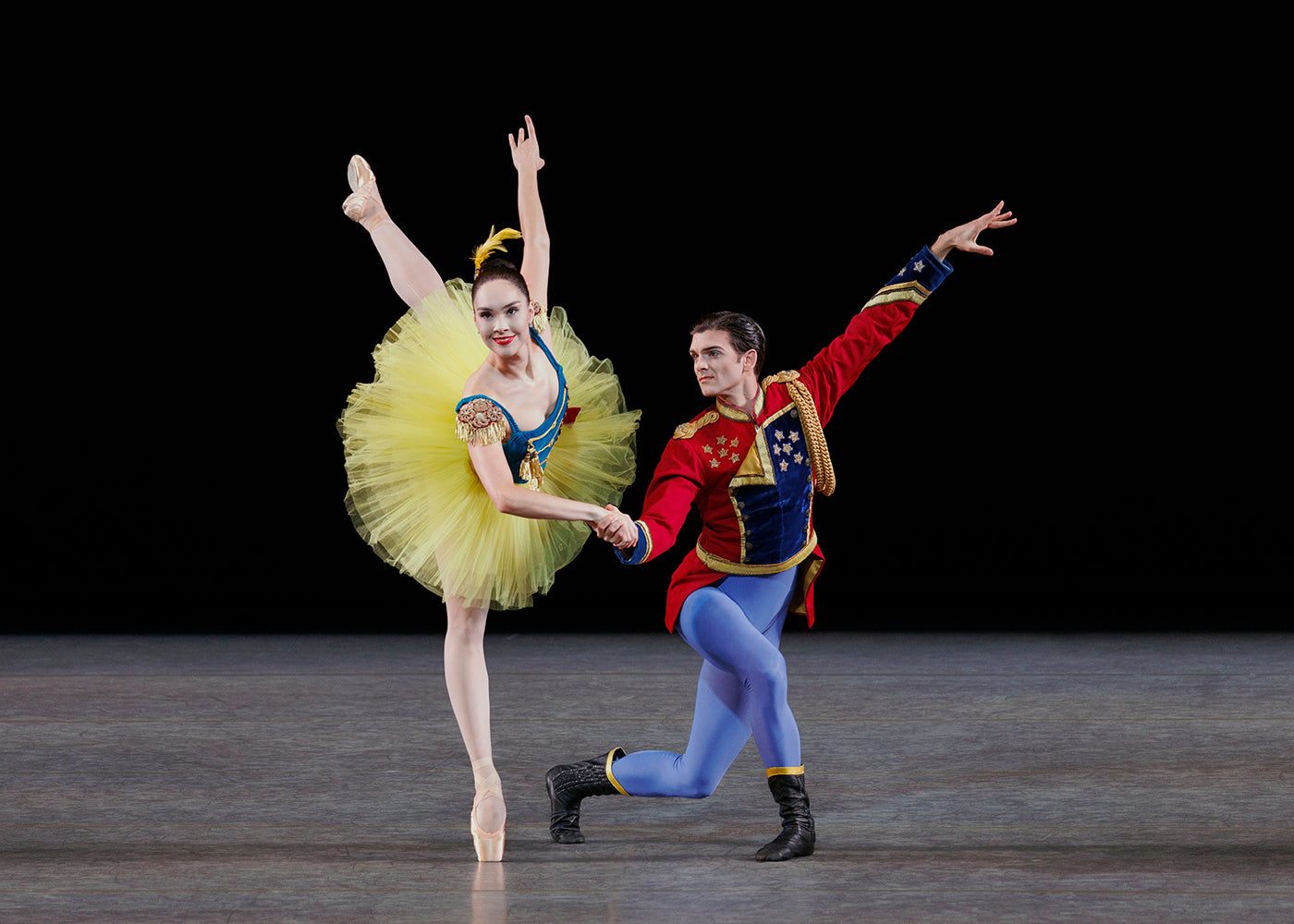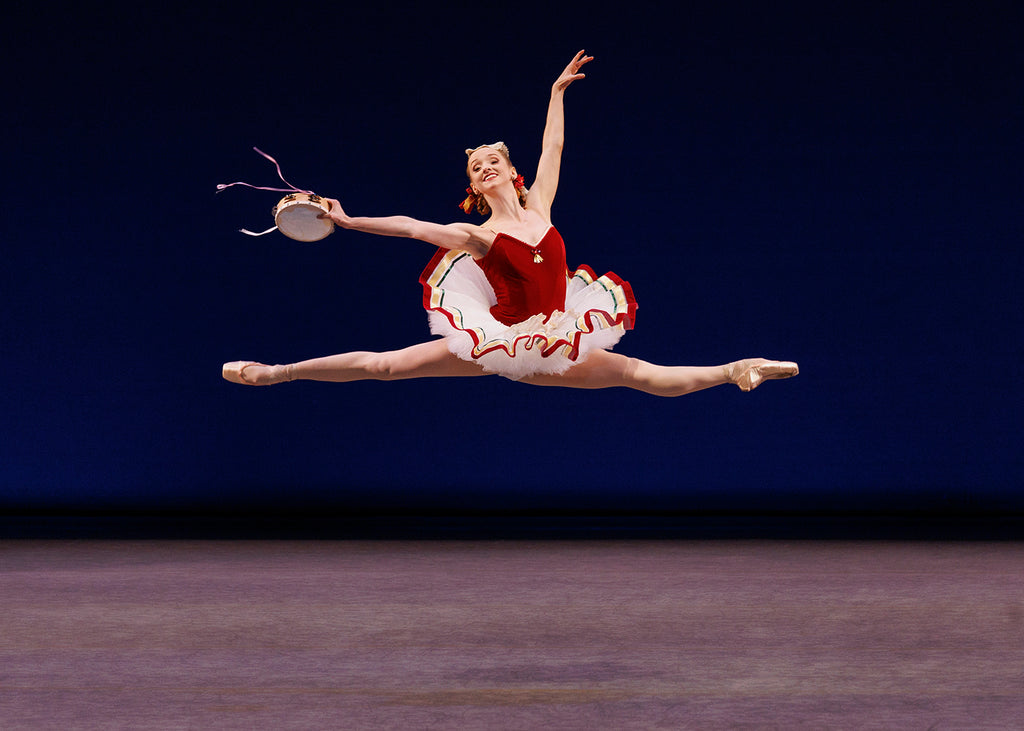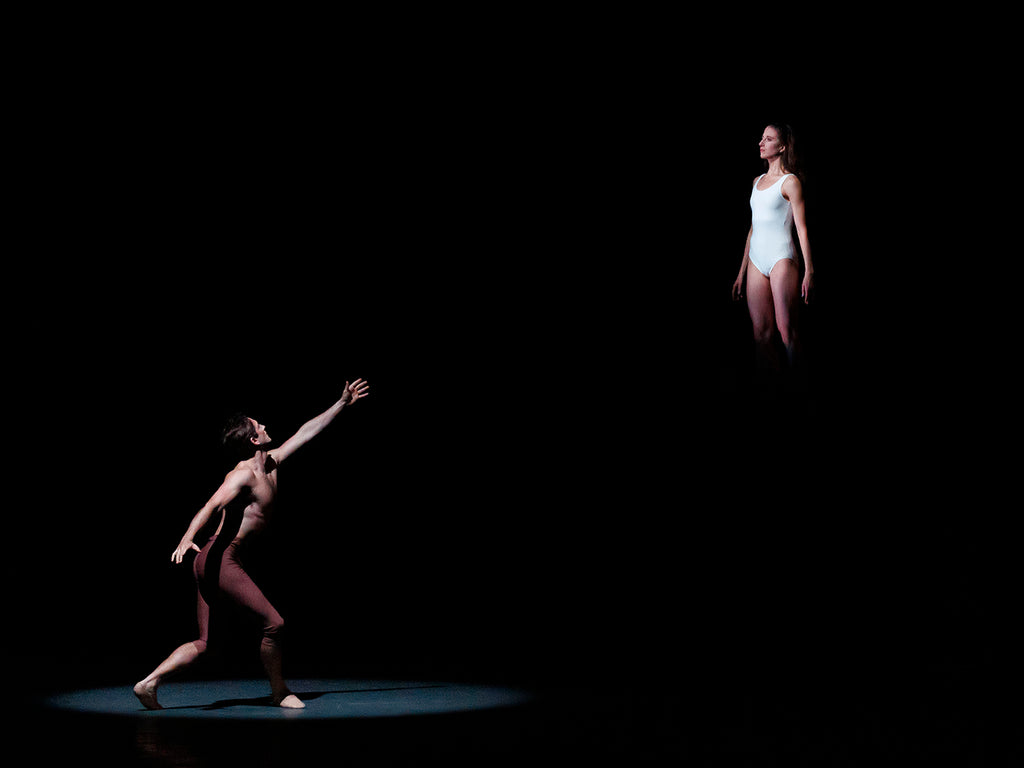Soloist Emma Von Enck made a scintillating debut in the feisty “Tarantella” pas de deux. Every jump was maximal, even the head-flicking ones into the wings, which dancers often throw away as they peter out. Sebastian Villarini-Velez, also debuting, radiated joy and whipped out some thrilling pirouettes. He needs to make sure he hits that tambo on time in his next outing, however. Being off the music is a cardinal sin in Balanchine land, and “Tarantella” is one of those roles—like Coffee in “The Nutcracker”—where if you are going to join the band you better get in the groove. Speaking of onstage musicianship, a special shout out to Victor Abreu for absolutely shredding it on the air harmonica in “Western.”
Most exciting of all were the debuts of Mira Nadon and Peter Walker as the Liberty Bell and El Capitan in “Stars and Stripes.” Possibly, this was due to upended expectations. Nadon and Walker are not the sunniest, rah rah of dancers. Nadon tackles even the ebullient Dewdrop solo with an arched brow; Walker comes to life in Kyle Abraham’s moody milieux. When I think of them, I do not immediately think of cheerleaders or soldiers. But in their joint debut, they brought the hooray and the hooah and big smiles to boot. They also displayed excellent, bold dancing, though they had a few minor blunders.
Most notably, Nadon had a huge slip coming out of a dazzling fouetté sequence. It was startling but not surprising, as she employed the go-for-broke approach she brings to every role. It’s the kind of dancing that takes risks and often leads to falls—the kind that Balanchine famously loved. Luckily, she recovered quickly and grinned even bigger. I hope she doubles down on rosin instead of changing her tactics in the future, because it is thrilling to watch someone so wildly free onstage. Clearly the NY audience agrees; she was greeted with entrance applause—uncommon for a Wednesday night youngster debut. But Nadon is truly something special, and her first go at anything feels like a major event. Diamond anniversary notwithstanding, she is making it feel like a momentous time at City Ballet all on her own. Walker matched her every step of the way, and he was crisp and showy in his solo. Although both seemed to flag a bit by the time the actual flag dropped, it was a great inaugural showing.












Love Faye’s writing. Loved her dancing when we worked together at City Ballet. So smart.
Faye Arthur’s reviews are most insightful – I enjoy and learn – thanks
So descriptive of the performance that I closed my eyes and could see the ballet from a seat in the First Ring.